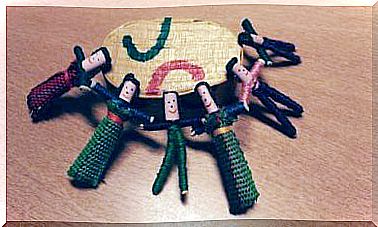7 Ways To Produce Neurons At Any Age

Many people think that we lose neurons with age in an irreparable and irreversible way, but this catastrophic scenario is not completely true. In fact, it is possible to produce new neurons.
Neurogenesis (formation of new neurons) continues to occur in the brain in old age. This occurs, in particular, in a region of the brain called the hippocampus, which participates in memory and learning. Once formed, the new neurons are incorporated into the rest of the neuronal circuit.
Several scientific studies indicate that certain habits increase neuronal production and rejuvenate the brain. In this article, we explain some different ways to produce neurons. Put them into practice!
Different ways to produce new neurons
1. Play a musical instrument
Music improves mental quickness and learning ability when playing a musical instrument.
It is not necessary to have a gift. All you need to do is combine auditory, tactile and sensory activity, logic, analytics and movement while following the rhythm of music to awaken the synchronized work of different brain regions.

Learning to play a musical instrument is like gym training for the brain. In the medium term, it improves problem-solving skills by combining the practical side with the creative side, allowing you to store memories and learning more effectively.
It can even increase the intelligence quotient at preschool age. A study conducted with preschool children who learned to play the piano showed that their intelligence quotient increased more significantly than those who had not taken piano lessons.
2. Oxygenate yourself
Aerobic exercise is what we do by walking at a good pace, jogging, dancing, swimming, cycling, etc. This type of exercise encourages the generation of new neurons.
This activity also improves blood flow, which is particularly large in the brain, and can even create new blood vessels and strengthen existing ones.
As a result of optimal vascularization, it is also possible to optimize the transport of nutrients and oxygen to brain cells, promoting neurogenesis.
In this sense, a recent study carried out with people who followed aerobic exercise training showed that, after 3 months, it improved the oxygenation of some brain regions that age earlier with age.
In addition, people responded better to memory tests and had a greater number of neurons in these regions, which indicates that the brain remains younger.
3. Move legs
Some studies carried out in animals that exercised by running on a treadmill have shown that moving the legs increases neurogenesis in the areas of memory and learning, whereas this effect is not observed in sedentary animals that do not exercise.
The more we move our legs, the more neurons we generate. The greater the distance covered by walking, the greater the neurogenesis in the areas of learning and memory.
This makes sense if we take into account that, as we move around on foot, the brain stimulates the exploration of new surroundings that we try to learn and remember to guide us.
Recent research has shown that exploring new spaces and discovering new objects reduce the risk of Alzheimer’s and improve memory.
So an excellent way to produce neurons is to walk around unfamiliar places. Get out of the rut and surprise your brain with new things to discover!
On the other hand, reducing the mobility of the legs also leads to a reduction in the formation of new neurons. For example, astronauts who spend months in non-gravity situations and people with reduced leg mobility have been shown to reduce neurogenesis by up to 70%.
4. Mind-body exercises are perfect for producing neurons
Meditation practice (yoga, tai-chi, mindfulness, etc.) involves learning about the natural course of thoughts and behavior patterns without necessarily adding an emotional component.
Mind-body exercises promote memory functions for task execution and decision-making, and stimulate neuronal activity in various brain regions.
For example, daily practice of zen meditation, mindfulness or yoga for a few months modifies neuronal circuits and promotes an increase in gray matter in the brain areas of memory and emotion management.
This activity also contributes to promoting deeper breathing, which is extremely beneficial to the brain, as this organ has a high need for oxygen.
5. Eating for the three brains
Omega-3 fatty acids are essential for the brain. Omega-3 preferentially accumulates in regions of the brain related to memory and learning.
However, the brain does not produce omega-3, as it lacks the elements of metabolism necessary to manufacture it. Therefore, it is essential to obtain it through food.
Many scientific works have shown that ingesting the right amounts of omega-3s not only decreases neuronal death, but also increases the formation of neurons.
Something similar happens with humor. When omega 3 levels are low, there is a greater predisposition to depression and a compromised mood, and even the risk of suicide increases.
On the other hand, foods rich in fiber, lactic ferments and diets with an adequate proportion of vegetables and fruits help maintain the health of the intestine and the microorganisms that inhabit it, which make up our “second and third brains”.
6. Write a book
measured the brain volume of creative writers and demonstrated that these people dedicated to the literary genre had a greater amount of gray matter (the equivalent of saying they had more neurons) in some brain areas that manage the generation, organization and revision of ideas.

7. Develop creativity to produce neurons
If you don’t like writing, it may be that other activities, such as fine arts and performing arts, catch your attention. In fact, all the practices that foster creativity can produce neurons.
Creativity is one of the activities with which the brain spends the most energy and one that stimulates it the most. Being creative is part of our intimate human nature.









